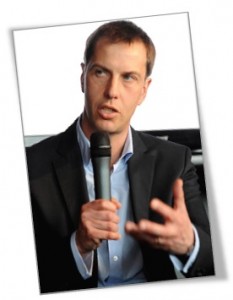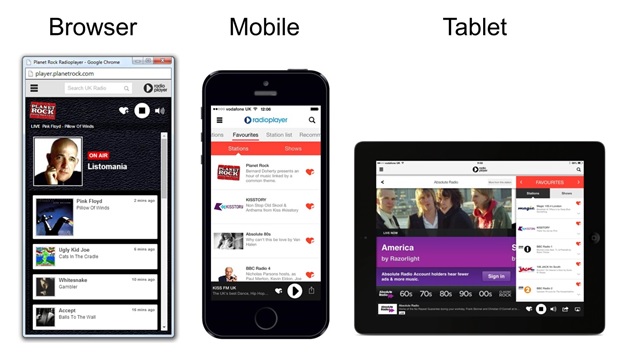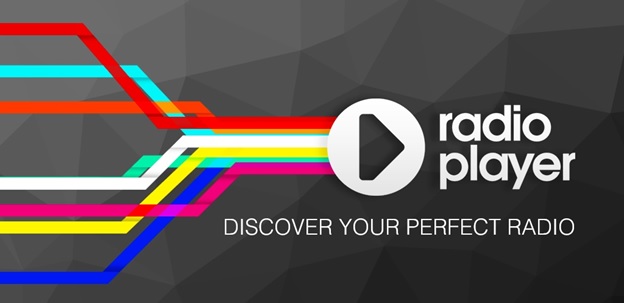From the consumer viewpoint, one of the best things about radio is that it just works. You simply turn on a single and simple device, and your favorite stations are right there, delivering the content you want. Unfortunately, the same isn’t necessarily true when it comes to streaming.
As more of us listen to streams using smartphones, tablets, and computers, the user experience becomes frustratingly inconsistent. It can be difficult to know where to find content that might live on iHeartRadio, TuneIn, radioPup, or a stand-alone app. And then once the content is located, the stream quality can vary widely influenced by a number of factors, many of which are out of the broadcaster’s control.
 It would certainly benefit the radio industry and help secure its future if streaming was as easy as listening to a traditional radio. Across the Atlantic that thought process led to the development of the Radioplayer app – an online audio player that gives listeners access to live, on-demand, and podcast radio from hundreds of stations – commercial and non-commercial — in the United Kingdom. All in one place. But as we know from our experience in the States, the process of bringing different broadcasters with varying priorities together for a common goal is never easy.
It would certainly benefit the radio industry and help secure its future if streaming was as easy as listening to a traditional radio. Across the Atlantic that thought process led to the development of the Radioplayer app – an online audio player that gives listeners access to live, on-demand, and podcast radio from hundreds of stations – commercial and non-commercial — in the United Kingdom. All in one place. But as we know from our experience in the States, the process of bringing different broadcasters with varying priorities together for a common goal is never easy.
Radioplayer was developed and is maintained by a not-for-profit company backed by the entire British Broadcasting industry, including the BBC. To find out more about this innovative approach to streaming and the unique cooperation that has been established between rivals, we talked to Managing Director Michael Hill.
JM: Tell us how the concept for the Radioplayer app came about.
MH: ‘Radioplayer’ is a concept that’s much bigger than the app. It’s about working together, to secure radio’s future. About four years ago, online listening appeared to be flat-lining, compared to the growth of video, social media, and other content. So the UK radio industry decided to collaborate on some strategically important stuff. That is, to ‘agree on technology, compete on content.’
Our research showed that people found radio websites and players inconsistent and difficult to use. So the BBC and commercial radio got together and designed a ‘best-in-class’ web player. We aimed for – ‘it just works’ – like a radio.
We launched with 157 UK stations in 2011. Within 18 months, online listening had grown by 40%. We now feature more than 400 stations, and serve 7 million users per month. Our apps are world-leading and incorporate the best radio search experience in the world, a brilliant recommendation engine, and an elegant ‘series-stacking’ feature for catch-up and podcasts. Both iTunes and Google Play just featured them in their ‘best new app’ categories.
 JM: It couldn’t have been easy to get public and commercial radio to work together. What was the biggest barrier you faced in making it happen?
JM: It couldn’t have been easy to get public and commercial radio to work together. What was the biggest barrier you faced in making it happen?
MH: The toughest challenge was defining where the lines are drawn. Most people agree there are issues best addressed through collaboration and they also agree companies need freedom to act alone, competing on distinctiveness and innovation.
We were successful with UK Radioplayer because throughout the design process, we applied ‘just enough’ consistency to solve the ‘user experience’ problem while leaving space for innovation and distinctiveness. We got the balance right for broadcasters because we are broadcasters ourselves.
JM: Has the concept moved beyond the UK?
MH: Some countries — Belgium, Norway, Finland, and others — have adopted Radioplayer-style models of their own. And it’s no secret we’re talking to the Canadian radio industry about launching a version of Radioplayer. They see clear benefits to owning their own aggregator rather than becoming increasingly dependent on third parties.
JM: What do you think would have to take place for U.S. broadcasters to do something similar?
MH: You’ve already got aggregation models, like iHeart and TuneIn. These go some of the way to solving the ‘user experience’ problem. But they’ve grown out of a largely commercial need and don’t seem very collaborative or particularly strategic. Sometimes, an industry has to look at the long game as well as the quarterly spreadsheets. Damn, that sounds preachy. Sorry.
JM: Many broadcasters in the States feel that efforts to promote the stream should take a backseat to promoting over the air radio (a la NextRadio). What’s your reaction to that?
MH: We shouldn’t be ‘promoting’ specific distribution methods to listeners at all. They don’t understand, or care. They just want to listen to our great content. That’s not to say we shouldn’t discuss distribution behind closed doors but radio folk tend to obsess about platforms at the expense of content.
JM: How does monetization of the stream work for commercial broadcasters in the UK?
MH: For several years, streaming in the UK has been monetized in the same way as broadcast – counted and sold as listener-hours (we don’t have the same requirement to replace ads in our streams as you do in the U.S.).
But now, stations are starting to introduce in-stream systems like Triton and AdsWizz, enabling dynamic targeting of audio spots. At the same time our biggest commercial group (Global Radio) has announced it’s leading a new (and collaborative) project to launch a Digital Audio Exchange for ads (DAX for short). Over the next couple of years these two innovations combined will revolutionize how commercial radio is viewed by advertisers.
JM: The concept of the radio industry speaking in “one voice” goes beyond both streaming and borders. Explain why it matters.
MH: There’s one word that explains the importance of radio speaking with ‘one voice’: cars.
Auto manufacturers work on such long timescales and across such vast geographical markets that a single country can’t hope to influence them, let alone a single company. Not even a country as large as the U.S. or a company as influential as the BBC. Unless we speak with one voice, we will not be heard clearly and ‘proper radio’ will start getting left out of new digital dashboards.
JM: James Cridland, a radio futurologist who consults Radioplayer, once said, “A growing share of a shrinking market may look impressive to investors; but a growing market is ultimately more important to the long-term health of an industry.” How can American broadcasters begin growing the market?
MH: There are two areas to focus on and these are so obvious and facile that I apologize in advance.
1) Content: Clearly still King. ‘Proper Radio’ done well has far more value to listeners than the sum of its parts. But we’re starting to see that value erode, particularly in the U.S. Others are appropriating the term ‘radio’ for their own commercial ends, even if they’re just algorithmic streaming services. To fight this, we must amplify what’s distinctive about ‘proper radio.’
2) Distribution: If content is King, distribution is Queen. Having the greatest Breakfast Show on the planet is pointless if no one under 40 can work out how to listen. That’s where industry collaboration becomes crucial. Not just for the obvious (streaming apps), but for developing next-generation radios.
Streaming is great, but it doesn’t solve all our problems, and it sounds like crap in a moving car (in the UK, anyway). We need to prototype new, smarter radios, and persuade phone and car manufacturers to support a hybrid future.
JM: What is one suggestion you have for someone with an innovative idea that doesn’t know how to get started?
MH: Here are four ideas:
- Start somewhere. Launch something. Make one small step, and you’ll be surprised how different the world looks.
- Don’t worry if you can’t find millions to do the startup thing. You can get things done very cheaply, and don’t want to scale up too big too soon. You’ll just dilute your energy and burn money.
- Find someone you feel you can trust and partner with them if you can’t do it alone. But never do business with anyone you wouldn’t want sitting round your kitchen table with your family.
- Always read instructions carefully. This question asked for one suggestion. Doh.
Thanks to Mike Hill for these great responses, and to Mike Stern for writing this post.
INNOVATION QUOTE OF THE WEEK
“Our wretched species is so made that those who walk on the well-trodden path always throw stones at those who are showing a new road.”
Voltaire
More of Radio’s Most Innovative
- Radio’s Most Innovative: GenX.fm (or “What We Did Over Memorial Day Weekend”)
- Radio’s Most Innovative: Jerry Lee
- Radio’s Most Innovative: WNYC Studios
- Radio’s Most Innovative: One Year Later
- Radio’s Most Innovative: “Radio’s Best Friend” Art Vuolo
- What’s On Your Bucket List? - March 31, 2025
- “Honey, would you please talk to Alexa?” - March 28, 2025
- On The Radio, It’s Always 5 O’Clock Somewhere - March 27, 2025






Fred, Thank you for the Royal Update on the dynastic marriage of Content & Distribution. We all need to concentrate on re-learning two essential languages: Saying it right and getting the reception aka Sending & Receiving. See you at NAB! Clark
Thanks, Clark – much appreciated.
“Agree on technology, compete on content” is a brilliant strategy and appears a successful execution in the UK. But can we get it done in the USA?
Having done my share of “herding cats” for the radio industry (the merger of the NRBA with the NAB in the late 80’s and the formation of the HD Radio Alliance in 2006), I can tell you that it is possible, but it is not easy.
The biggest challenge will be finding the common ground on which to build a streaming standard. Do we go with iHeart, or perhaps TuneIn? Should we merge Rdio with NextRadio? Unlike HD Radio technology when it started, virtually every radio broadcaster in the USA has already staked out their streaming turf and strategy (and they are all different). Trying to get all those ducks in a line would require extraordinary effort and cooperation.
As Michael Hill noted about Radioplayer, it takes a high level of trust among competitors to join forces for a common good. We are fortunate in that the current radio leadership in the USA is smart, aggressive and focused on growth (and for the most part, like each other). People like Bob Pittman, Dan Mason, Lew Dickey, Jeff Smulyan, Caroline Beasley, Peter Smyth, David Field and other leading CEO’s know that they are much more effective when they work together — be it legislative issues or technology.
If the focus remains centered on the benefit to the consumer (the ultimate end user and everyone’s common target) they CAN do it. The real question is WILL they?
These are good questions and great insights, Peter. As you note, you’ve been there on the ground floor with HD Radio and it was never easy.
But that was a different time. Satellite radio was coming but streaming was embryonic. The broadcasters of that period were sitting on the lead, pretty content with their lot.
Today, the game has shifted. They have more incentive now. And as you suggest, while they are smart enough to do it, the question remains whether they are wise enough.
The click is ticking.
I very much appreciate you taking the time to comment.
Unless it gets delayed again, the Canadian version of Radioplayer (which will indeed use that name) should be launched in just about a month (on October 1st).
That would be exciting news, Eric, and more evidence that “coopetition” is alive and well in broadcasting throughout the world. Appreciate the comment.
The comments from Michael Hill about radio speaking with one voice, if only for the benefit of car manufacturers with their long time horizons and global production/sales reach are both daunting and vitally important to our industry.
Thanks for continuing to publicly keep the automotive discussion front and center.
No problem, Andrew. There are so many critical factors and questions facing radio, but none bigger than the car issue. It impacts every department in the radio station. Thanks for taking the time to comment.
Thanks!